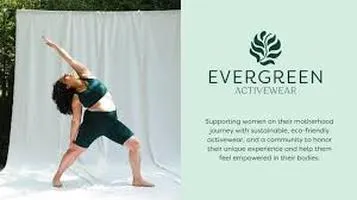Sustainable Activewear: A Leap Toward Eco-Friendly Fitness
Sustainable activewear is a growing trend in the fashion industry, focusing on creating athletic clothing that is environmentally friendly and ethically produced. This type of activewear is crafted from eco-conscious materials such as organic cotton, recycled polyester, and bamboo fibers, which reduce environmental impact and carbon footprint. Brands dedicated to sustainable practices often employ fair trade principles, ensuring that workers receive fair wages and safe working conditions. Additionally, sustainable activewear emphasizes durability and quality, encouraging consumers to purchase fewer, longer-lasting items. Innovative design techniques, such as waterless dyeing and minimal waste production, further contribute to sustainability goals. By choosing sustainable activewear, consumers can enjoy high-performance, stylish apparel while supporting a healthier planet and promoting responsible consumption.

In a world increasingly conscious of its environmental footprint, the fashion industry has found itself at the nexus of sustainability and style. Among the most transformative segments is activewear, a market that traditionally relies on synthetic, non-biodegradable materials. Enter sustainable activewear, a revolutionary approach that promises to redefine how we think about our exercise clothes. This review delves into the merits and challenges of sustainable activewear, its impact on the environment, and its future in the fashion landscape.
The Rise of Sustainable Activewear
The demand for sustainable activewear has surged in recent years, driven by a growing awareness of environmental issues and a desire for ethical consumption. Brands like Patagonia, Girlfriend Collective, and Allbirds are at the forefront, offering products that combine functionality, style, and eco-friendliness. These companies utilize recycled materials, organic fabrics, and ethical manufacturing processes to produce their activewear, ensuring that each piece not only performs well but also minimizes environmental impact.
Materials Matter
One of the most compelling aspects of sustainable activewear is its use of innovative materials. Traditional activewear often relies on petroleum-based synthetics like polyester and nylon, which contribute to plastic pollution and require significant energy to produce. In contrast, sustainable brands are turning to recycled plastics, organic cotton, bamboo, and even biodegradable materials.
For instance, Girlfriend Collective's leggings are made from recycled water bottles, reducing waste and conserving resources. Similarly, Patagonia employs recycled polyester and nylon in many of its products, demonstrating that high performance and sustainability can go hand in hand. These materials not only reduce the carbon footprint but also often offer enhanced breathability and comfort, making them a win-win for consumers and the planet.
Ethical Manufacturing
Sustainable activewear brands also emphasize ethical manufacturing practices. This includes ensuring fair wages, safe working conditions, and minimal environmental impact throughout the production process. Brands like Pact and Outdoor Voices are committed to transparency, often providing detailed information about their supply chains and the steps they take to ensure ethical practices.
This commitment to ethical manufacturing is crucial, as the fashion industry has long been plagued by labor exploitation and unsafe working conditions. By choosing sustainable activewear, consumers can support companies that prioritize human rights and environmental stewardship, contributing to a more just and sustainable world.
Performance and Aesthetics
One common misconception about sustainable activewear is that it sacrifices performance and style for eco-friendliness. However, this couldn't be further from the truth. Advances in textile technology have enabled sustainable brands to create activewear that is not only functional but also fashionable.
Products from brands like Allbirds and Athleta are designed to meet the demands of various physical activities, from high-intensity workouts to yoga and outdoor adventures. These items often feature moisture-wicking properties, four-way stretch, and durability, ensuring that they can withstand rigorous use. Furthermore, sustainable activewear comes in a wide range of styles and colors, catering to diverse tastes and preferences.
The Cost Factor
One of the primary concerns consumers have about sustainable activewear is the cost. Sustainable products often come with a higher price tag compared to their conventional counterparts. This is due to several factors, including the use of high-quality, eco-friendly materials, ethical manufacturing practices, and smaller production scales.
While the initial investment may be higher, sustainable activewear offers long-term value. These products are designed to be durable and long-lasting, reducing the need for frequent replacements. Additionally, by supporting sustainable brands, consumers are investing in a healthier planet and more ethical industry practices.
Challenges and Future Directions
Despite the many benefits of sustainable activewear, there are challenges to address. The higher cost can be a barrier for some consumers, and there is a need for greater accessibility and affordability. Additionally, while many brands are making strides in sustainability, the industry as a whole still has a long way to go in terms of reducing its environmental impact.
Looking ahead, the future of sustainable activewear is promising. As consumer demand continues to grow, more brands are likely to adopt sustainable practices and innovate with new materials and technologies. Collaboration between companies, governments, and non-profits will be essential to drive systemic change, making sustainable activewear the norm rather than the exception.
Conclusion
Sustainable activewear represents a significant step forward in the quest for eco-friendly and ethical fashion. By prioritizing recycled and organic materials, ethical manufacturing practices, and high-performance design, sustainable activewear brands are proving that it's possible to look good, feel good, and do good for the planet. While challenges remain, the momentum behind sustainable activewear is undeniable, promising a future where our fitness routines contribute to a healthier world. Whether you're a fitness enthusiast or a casual exerciser, investing in sustainable activewear is a choice that benefits both you and the planet.






